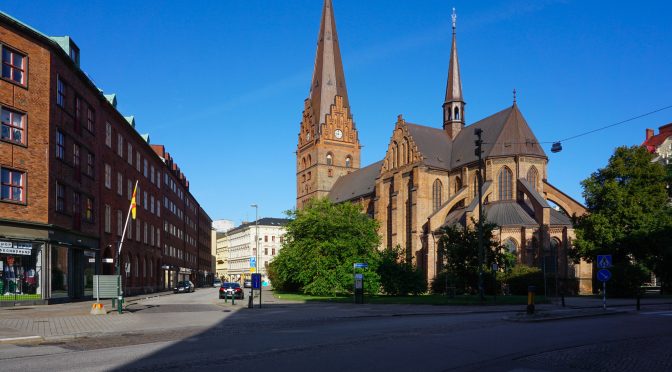By Dyckman Welcome
Data suggests that public education is most effective when parents, teachers, students and school administrators collaborate to focus on the individual needs of a child. A one-size-fits-all model of educating and measuring student achievement works well for some children, but leaves others desperately seeking public education alternatives.
One alternative to the current system of public education fueling political debate is the expansion of school choice through school voucher programs. According to supporters, implementation of voucher programs would create a market driven system that improves educational standards benefiting all of America’s children. The problem is, the school voucher system has been implemented in other parts of the world, and failed, even as it appeared to initially succeed.
In a 2014 Slate article Sweden’s School Choice Disaster, Ray Fisman explains the downside to the voucher program and the competitive spirit that sabotaged its success. It began when the Swedes put their voucher system in place based on the free market ideas of Milton Friedman who was an advocate of the individualist perspective regarding educational choices:
The hope was that schools would have clear financial incentives to provide a better education and could be more responsive to customer (i.e., parental) needs and wants when freed from the burden imposed by a centralized bureaucracy.
But ten years after implementation of the reforms, the Swedes noticed a significant drop in their global scholastic achievement rankings. [The rankings compare the educational achievements of 65 countries based on several exams administered to students by the Program for International Student Assessment (PISA).]
The Swedish PISA scores were so low that they prompted a review of the internal grading system of Swedish standardized tests. It was discovered that the competition for voucher dollars was so strong, it eventually forced corruption in the system as schools began to manipulate the test scores and grades of children to attract parents and teachers. With the responsibility of choice placed on parents with vouchers in hand, schools were motivated to create false data to create the appearance of high achievement. However, the independent PISA scores indicated that students were actually performing worse after the voucher system was implemented.
The moral of the story? In a free market where competition to survive is the main driver, competitors will always find creative ways to come out on top. Because of a lack of internal oversight, the inherent greed born out of a system of competition caused even the worst schools to manipulate numbers in order to retain students.
What can the US learn from the Swedish experiment? If the voucher system is to be effective, then a series of checks and balances must be incorporated into the process so that the competition avoids the natural tendency toward corruption. Left to their own devices, US schools will eventually focus on surviving rather than teaching, just as they did in Sweden. The overall goal of a better education for all students will eventually be overshadowed by the will of schools to simply survive if rules, regulations and oversight are eliminated from the process in the name of deregulation and less government control.
Of course, adding more bureaucratic structure to the school voucher program is the antithesis to the philosophy driving the proposal in the first place. Still, there must be a balance between the free-market approach and the bureaucratic approach that truly allows children access to the best education possible.
Without the implementation of a balance between divergent philosophies of government, implementation of school voucher programs in the United States is bound to repeat the failures of other nations like Sweden.
Dyckman Quade Welcome is Operations Manager for the NYC Department of Education’s P311 Call Center, serving 1.1 million students throughout the five boroughs. He is currently pursuing a Master’s degree in Urban Studies at CUNY’s School of Professional Studies with a concentration in Public Administration.
Photo by barnyz via flickr (CC-BY-NC-ND)



